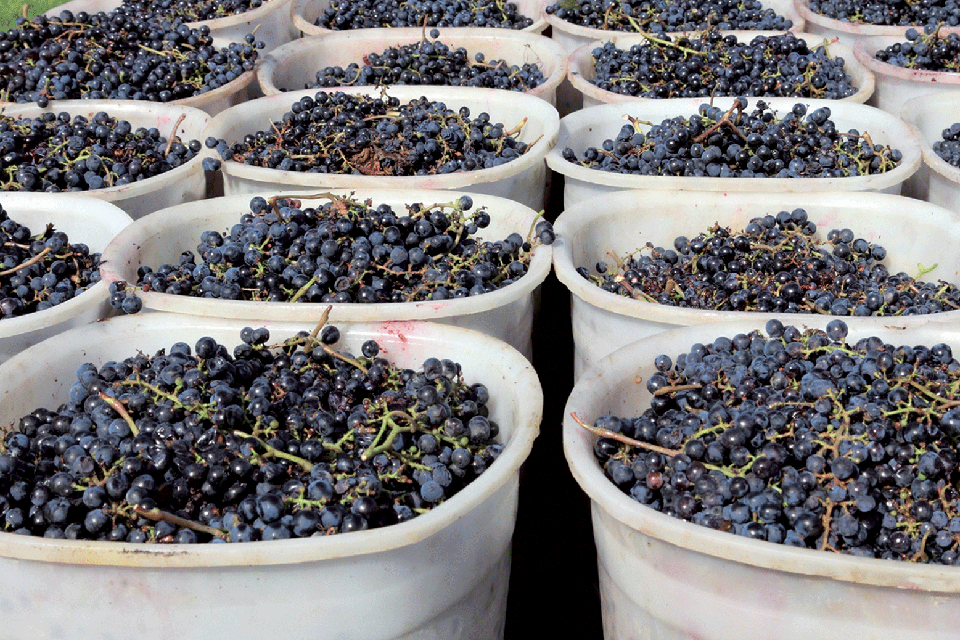Description
The Colli di Scandiano e di Canossa PDO is reserved for the following types of wine: White and Red; Spumante, Passito and Novello (only with specification of grape variety). The Designation also incorporates numerous grape variety specifications.
Production Area
The production area of Colli di Scandiano e di Canossa PDO is within the entire territory of the municipalities of Albinea, Quattro Castella, Bibbiano, Montecchio, S. Polo d’Enza, Canossa, Vezzano sul Crostolo, Viano, Scandiano, Castellarano and Casalgrande, and parts of Reggio Emilia, Casina, S. Ilario d’Enza and Cavriago, in the Province of Reggio Emilia, in the Emilia-Romagna region.
Description of product typologies
Colli di Scandiano e di Canossa PDO Bianco is straw-yellow; the nose bursts with floral and fruity fragrances of wild flowers, apple and pear; it is sweet, supple, mouth-filling, dry, fresh and harmonious on the palate. It may display Classico on the label. Colli di Scandiano e di Canossa PDO Rosso is ruby red; it ranges from fruity to floral on the nose, with characteristic notes of the grapes it is made from; it is dry, pleasant and full on the palate, with good persistence.
Grape variety specifications
The Colli di Scandiano e di Canossa PDO may display the following grape variety specifications. From white grape varieties: min. 85% Sauvignon (incl. Semi-Sparkling, Passito, Riserva), with the possible addition of Malvasia di Candia and/or Chardonnay and/or Trebbiano Romagnolo and/or Pinot Grigio and/or Pinot Bianco, max. 15%; Pinot (incl. Semi-Sparkling, Spumante), from Pinot Bianco, Pinot Grigio or Pinot Nero; min. 85% Chardonnay (incl. Semi-Sparkling, Spumante), with the possible addition of Pinot Bianco and/or Pinot Grigio and/or Pinot Nero, max. 15%; Malvasia (incl. Semi-Sparkling, Spumante, Passito), min. 85% aromatic Malvasia di Candia, with the possible addition of Malvasia di Candia and/or Pinot Grigio and/or Pinot Bianco and/or Chardonnay and/or Trebbiano Romagnolo, max. 15%; 100% Spergola. From red grape varieties: min. 85% Lambrusco (incl. Semi-Sparkling), Lambrusco Grasparossa (incl. Semi-Sparkling), with the possible addition of Lambrusco Marani and/or Lambrusco Montericco and/or Ancellotta, Malbo Gentile and/or Croatina, max. 15%; min. 85% Lambrusco Montericco (incl. Semi-Sparkling, Rosé), with the possible addition of Lambrusco Grasparossa and/or Lambrusco Salamin and/or Lambrusco Marani and/or Ancellotta, Malbo Gentile and/or Croatina, max. 15%; min. 85% Cabernet Sauvignon (incl. Riserva), with the possible addition of Sangiovese and/or Merlot and/or Ancellotta, max. 15%; min. 85% Marzemino (incl. Semi-Sparkling, Passito, Novello), with the possible addition of Croatina and/or Sgavetta and/or Malbo Gentile, max. 15%; min. 85% Malbo Gentile (incl. Semi-Sparkling, Passito, Novello), with the possible addition of Croatina and/or Sgavetta, max. 15%. The characteristics of the colour, fragrances and flavour of each specification are those typical of the grape variety and terroir of origin. The vinification and ageing processes of Colli di Scandiano e di Canossa PDO Passito must be carried out within the production area. The use of ventilated air is permitted during the drying stage in order to ensure a minimum natural alcohol level of 16% vol. The wine may be released for consumption after a mandatory ageing period of at least one year in wooden barrels, commencing November 1st of the second year following that of harvest. During this stage it can be mixed with wines from different years, as long as 85% of the wine is from the year of reference. At least 50% of the wine used to produce Colli di Scandiano e di Canossa PDO Novello wines must originate from the carbonic maceration of the grapes. The Colli di Scandiano e di Canossa PDO Sauvignon Riserva is reserved for still wines that have been aged for at least 18 months, at least 6 months of which must be in wooden barrels, commencing November 1st of the harvest year. The Colli di Scandiano e di Canossa PDO Cabernet Sauvignon Riserva is reserved for still wines that have been aged for at least 24 months, at least 6 months of which must be in wooden barrels, commencing November 1st of the harvest year.











